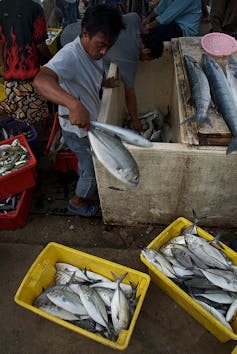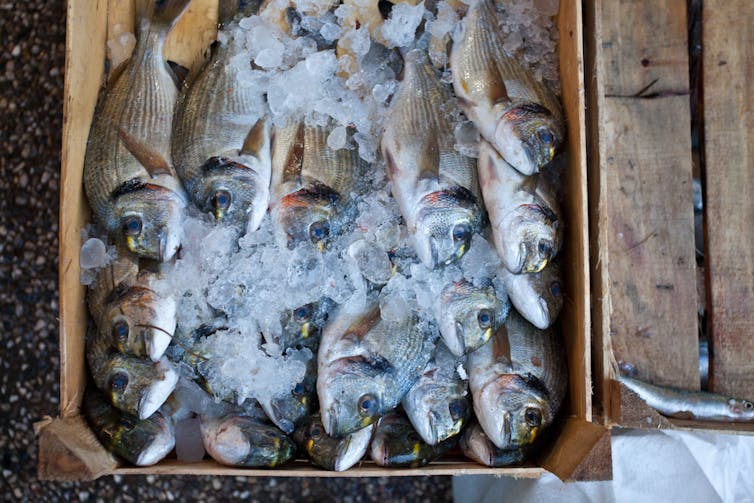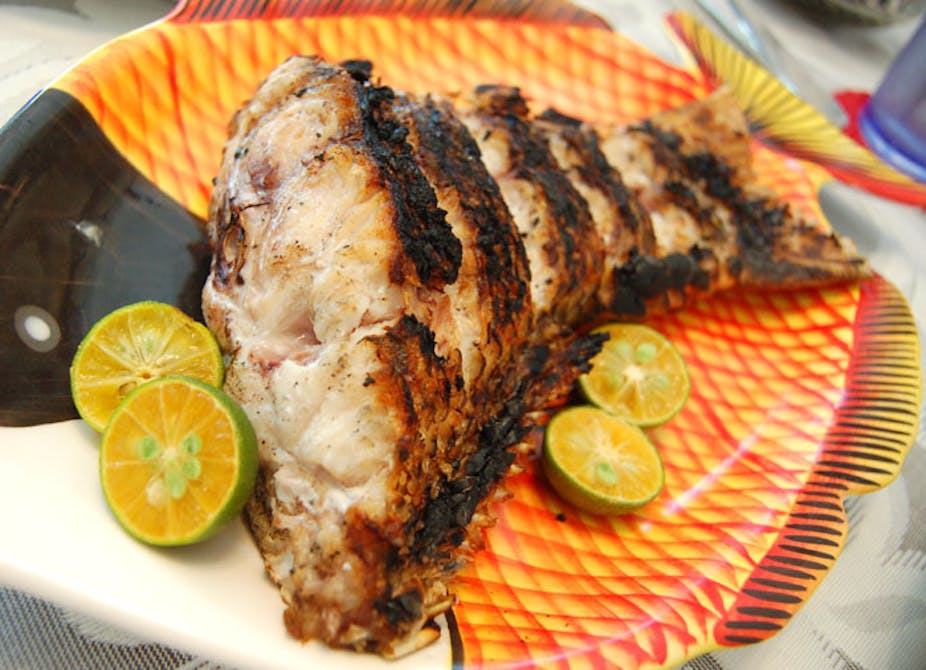Preliminary autopsy results have revealed the tragic deaths of Queensland woman Noelene Bishcoff and her daughter Yvana in Bali last month were likely caused by scombroid fish poisoning. Though not common – nor particularly rare – it is easily misdiagnosed. So, what do you need to look out for?
Scombroid poisoning arises from the consumption of fish that contains a high level of histamine, a chemical normally produced within our cells in response to an allergen. Not surprisingly, therefore, the symptoms generated are often mistaken for an allergic reaction to the fish itself.
High levels of histamine are generated in the flesh of the fish due to bacterial contamination, usually resulting from poor storage conditions, and particularly from inadequate refrigeration. These conditions allow bacteria to proliferate and convert an amino acid called histidine, naturally present in the flesh of the fish, into histamine.
Symptoms
Usually the symptoms are mild and dissipate without treatment in about eight to 12 hours. But in people who are more susceptible, or who have consumed fish containing particularly high levels of histamine, the symptoms can be severe.
Without treatment this can result, rarely, in a fatal outcome. People with asthma and other allergic conditions may be more severely affected.
Though the symptoms vary in intensity from person to person, they include:
- burning and tingling of the lips and mouth
- flushing of the face
- an itchy rash, often on the face, neck, chest and upper back
- sweating
- vomiting and diarrhoea
- headaches
- blurred vision
- palpitations
- dizziness.
In severe cases, and particularly in those suffering from asthma, bronchospasm can occur. This means the muscles of the bronchi contract and narrow, obstructing the respiratory airway and making it difficult to breath.
Symptoms can develop within a few minutes of eating the contaminated fish, but in some cases, they may be delayed by an hour or more.
Fish species
The condition is called scombroid poisoning because it is often associated with fish of the family Scombridae. This family includes tuna, herring, mahi-mahi (dolphin fish), mackerel, sardine, anchovy, skipjack and about 100 other species.

These species tend to have a naturally high level of histidine in their flesh, so when invaded by bacteria, the levels can become dangerously high.
Scombroid poisoning occurs worldwide. In Australia, 57 people reportedly contracted scombroid poisoning between January 2009 and December 2013. Nine were hospitalised but no deaths were reported. However, it is more commonly seen in South East Asia where scombroid species are more prevalent. It is also seen more often in regions were storage and refrigeration facilities are less than adequate.
Because scombroid poisoning can also result from eating contaminated fish from other families, the condition is better referred to as “histamine fish poisoning”.
Diagnosis and treatment
Diagnosis of scombroid poisoning is made by clinicians based on the patient’s symptoms and, if necessary, the diagnosis can be confirmed by measuring the histamine levels of any residual contaminated fish.
If the condition is recognised, and the symptoms are severe, it can be readily treated with oral antihistamines. This usually resolves the symptoms within 15 to 30 minutes.
Administering adrenalin via an EpiPen can help, but it is not particularly effective because the condition is not an allergic reaction in the true sense of the term. Other drugs such as cimetidine, which is usually used to treat excess stomach acid, can also be effective.
It is often not possible to tell, by observation, whether fish has a high histamine level, but sometimes contaminated fish has an unusual odour, reminiscent of ammonia, or has a metallic, sharp, salty or peppery taste. Sometimes, when cooked, the flesh of fish high in histamine has a honey-combed appearance.
Staying safe
Prevention is better than cure, so it’s wise to ensure, wherever possible, that any fish you consume is fresh or has been frozen immediately after having been caught.
Cooking, canning, smoking or freezing fish after high levels of histamine have already been generated in the flesh will not destroy the histamine, so how the fish has been treated immediately after the catch is the critical factor.

When travelling to countries where storage conditions may be suspect, it’s worth having oral antihistamines at hand.
Scombroid poisoning is different from many other types of food poisoning in that, though bacteria are involved in the process, it is not the bacterium itself, nor any toxin generated within the bacterium, that causes the problem. Consequently, antibiotics are of no benefit.
Neither is it an allergic reaction to the fish itself, so there is no need to avoid that species of fish in future. Just take care that any fish you consume is fresh and has been purchased from reputable retailers!

